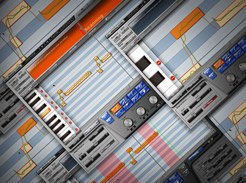

So let's delve further into what this software really is and can do, and in the process debunk certain myths around what the public or people who are new to Auto-Tune may think. It's just a part of our arsenal that we use everyday, so over the years we have really gotten to know the ins and outs of the program-from its benefits to limitations. Whether it's people requesting that we put it on their voice, something we do naturally to correct pitch, or even for a specific creative effect.

Working as a full-time engineer here at Studio 11 in Chicago, we deal with Auto-Tune on a daily basis.

Listen to this early example from the "King of Auto-Tune," the one artist who did more to popularize its effect than any other, T-Pain. For the sake of this article we will be discussing Auto-Tune and its effect on the human voice. There are other pitch correction programs out there that do similar functions: Waves Tune, Waves Tune Real-Time, and Melodyne (which is pitch correction, but not in real time), but Auto-Tune seems to have won the standard for real-time pitch correction.Īuto-Tune traditionally is used on vocals, although in some cases can be used on certain instruments. In case you don't know what it is, Auto-Tune, in a nutshell, is a pitch correction software thatĪllows the user to set the key signature of the song so that the pitch of the incoming signal willīe corrected to the closest note in that key (and does so in real time). Even people who have no clue what an EQ or compressor does somehow at least know of the word "Auto-Tune" and even the general effect it has on the human voice.īut even though Auto-Tune has evolved to become this cultural phenomenon, very few artists or producers truly understand how to get it to sound like the way it sounds on major records. What I find most fascinating about Antares Auto-Tune is that everyone and their mother knows what it is, despite the fact that it's just another digital audio plugin used in bedroom and professional studios alike.


 0 kommentar(er)
0 kommentar(er)
